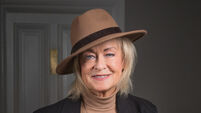It’s right up our street – Ireland the perfect backdrop for hit TV shows

IN Belfast, elaborate sets are being constructed, the fine metalwork of armour is being polished and costumes embroidered. In Dublin, a city street is transformed into Victorian London complete with the rustle of silk skirts along the pavements. From Game of Thrones to Ripper Street, more and more of the television we love to watch is filmed in Ireland. Our cities and countryside have become the perfect backdrop for the latest shows, many of which are set in, or inspired by, periods in history.
Period dramas have always been popular on both the big and small screens. But now more than ever, this genre is riding the crest of a wave and Ireland’s film industry is making the most of the favourable conditions. Advantageous tax breaks lure in production companies but filmmakers need more than financial incentives and attractive scenery to evoke the past. Time-travel is a difficult feat to accomplish without the right experts on the ground.











